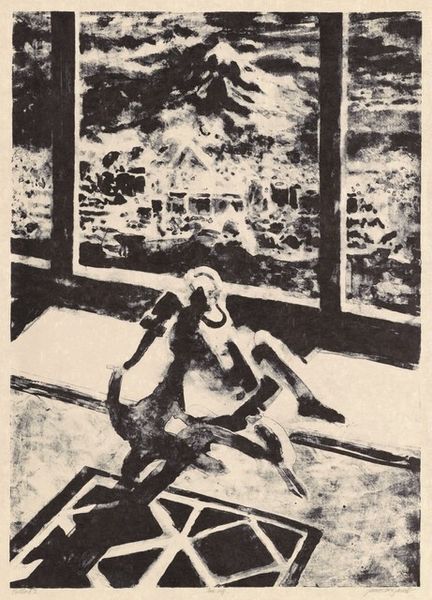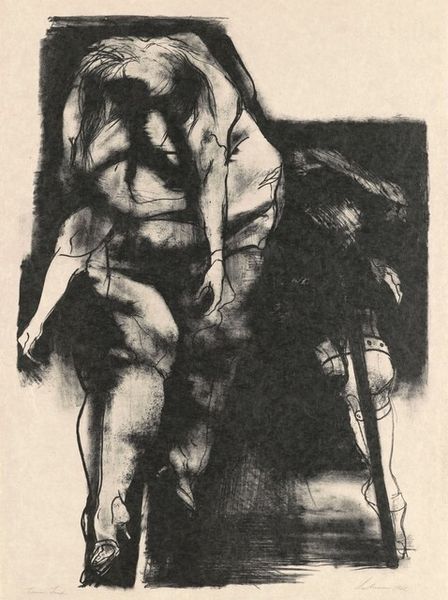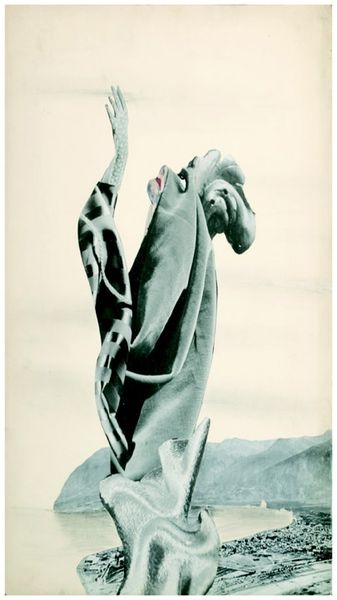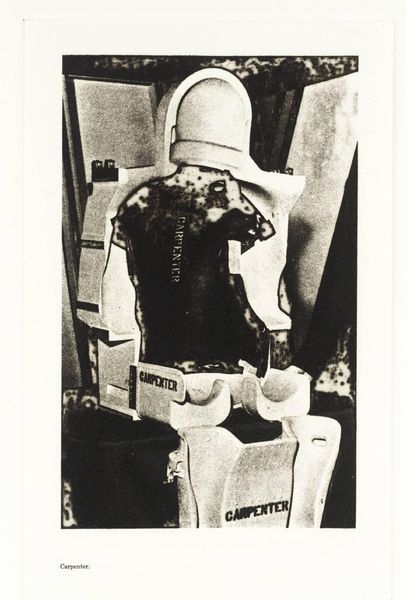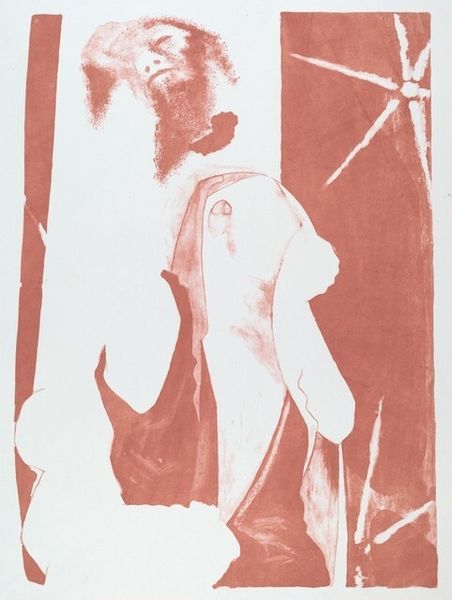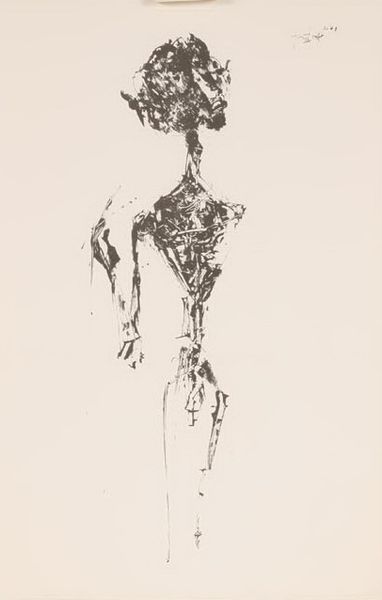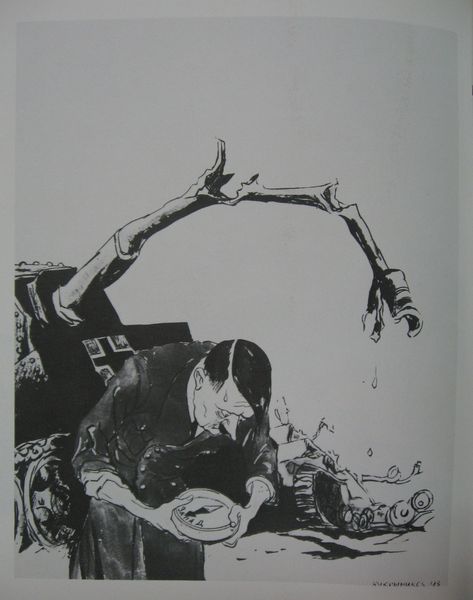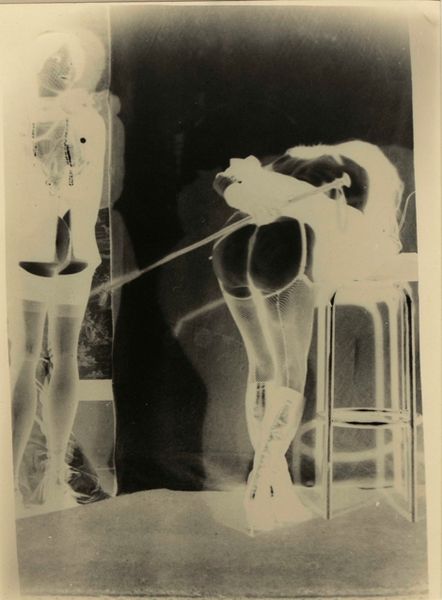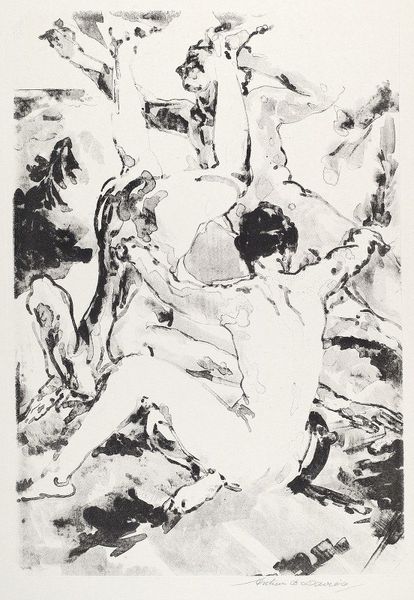
print, impasto
# print
#
figuration
#
impasto
#
surrealism
#
nude
#
monochrome
Copyright: National Gallery of Art: CC0 1.0
Editor: Here we have James McGarrell's "Untitled" print from 1962, and what strikes me most is its heavy contrast. It feels… raw. What’s your interpretation of the materials and the artist’s process here? Curator: Well, considering this print was produced in 1962, think about the accessibility, or lack thereof, to printing technologies at the time. How does this print differ from a mechanically reproduced image, like something from *Life* magazine? It feels like McGarrell is very deliberately manipulating the tools available to him to convey this immediacy. Editor: That’s true. The impasto creates such a visceral surface… almost sculptural, really. But what does that *mean* in terms of artistic intention? Curator: I see it as challenging the traditional hierarchy between painting and printmaking. It's deliberately not striving for the clean, reproducible lines often associated with prints. McGarrell seems more interested in exploring the material possibilities of the medium itself. It’s not about disguising the labor. He foregrounds the physicality of applying the ink, which is what conveys the… what did you call it, rawness. Editor: Right, he's emphasizing the 'making' aspect. Does the monochrome palette have an impact? Curator: Absolutely! The reduction to black and white intensifies the focus on the process and the textures created. Color would be another layer of complexity that, in this instance, would be a distraction. Here the limitations are a crucial feature. The tension arises in the negotiation of mark making: building forms by essentially, crude application of materials. Editor: So, you're suggesting that McGarrell is consciously playing with these limitations of the medium to… almost make a statement about labor, artistic choices, and materials? Curator: Precisely! It's a subtle but powerful comment on the value and visibility of artistic labor itself. The hand is evident, the process is evident and we are left questioning the definition of labor at that period in art making. Editor: That’s a completely different way of seeing it. I guess I was too caught up in the figurative aspect and less on the “how” and “why” of the art itself. Curator: It is always a balancing act, however, a focus on materials will provide new and critical ways of assessment.
Comments
No comments
Be the first to comment and join the conversation on the ultimate creative platform.
